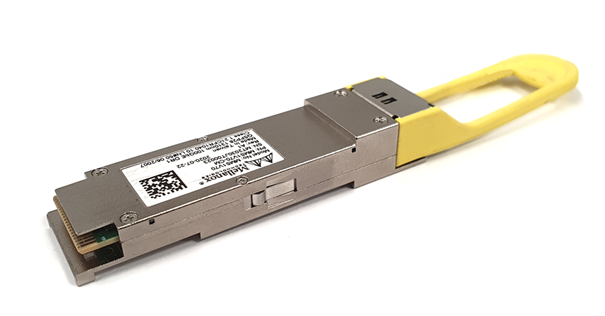QSFP28 transceivers have become an essential component in high-speed networking applications. They offer significant advantages in terms of data transmission capacity, flexibility, and cost-effectiveness. This article provides a comprehensive overview of QSFP28 transceivers, exploring their various types and applications.
What is a QSFP28 Transceiver?
A QSFP28 transceiver is a hot-swappable optical transceiver module widely used in data center and networking environments. It is designed to support high-speed data transmission rates of up to 100 Gbps per port. QSFP28 transceivers integrate both transmit and receive functions, allowing bidirectional communication over a single optical fiber.
Types of QSFP28 Transceivers
There are several types of QSFP28 transceivers available, each with its unique characteristics and applications:
QSFP28 SR4: Short Range transceivers that utilize multi-mode fiber (MMF) to support transmission distances of up to 100 meters.
QSFP28 LR4: Long Range transceivers that employ single-mode fiber (SMF) to achieve transmission distances of up to 10 kilometers.
QSFP28 PSM4: Parallel Single-Mode 4-lane transceivers that enable transmission distances of up to 500 meters using four separate SMF links.
QSFP28 CWDM4: Coarse Wavelength Division Multiplexing transceivers that transmit signals over four different wavelengths, extending the reach to approximately 2 kilometers.
QSFP28 ER4: Extended Range transceivers that support transmission distances of up to 40 kilometers using SMF.
QSFP28 4WDM-20: 4-Wavelength Division Multiplexing transceivers that transmit signals over four different wavelengths, enabling transmission distances of up to 20 kilometers.
Applications and Benefits
QSFP28 transceivers find applications in various networking scenarios, including data centers, telecommunications, and high-performance computing. Some of their key benefits include:
High Speed: QSFP28 transceivers support data rates of up to 100 Gbps, ensuring fast and efficient data transmission.
Scalability: These transceivers offer scalability options, allowing for easy integration into existing networks and future upgrades.
Cost-effectiveness: QSFP28 transceivers provide a cost-effective solution compared to deploying multiple lower-speed transceivers.
Flexibility: With different types available, QSFP28 transceivers offer flexibility in meeting specific networking requirements for different transmission distances.
Energy Efficiency: QSFP28 transceivers consume less power compared to previous-generation transceivers, contributing to energy savings and reduced operational costs.
Considerations and Compatibility
When implementing QSFP28 transceivers, it’s important to consider factors such as network compatibility, transmission distance, and fiber type. QSFP28 transceivers are typically compatible with QSFP28 ports on switches, routers, and other networking devices.
However, it’s essential to verify compatibility with specific hardware before installation. Additionally, the choice of transceiver type should align with the required transmission distance and the type of fiber (MMF or SMF) in the network infrastructure.
Conclusion
QSFP28 transceivers have revolutionized high-speed networking by providing efficient and cost-effective solutions for data transmission. With their diverse range of types and applications, QSFP28 transceivers continue to play a crucial role in supporting the ever-increasing demand for faster and more reliable connectivity

